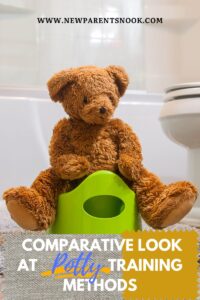Some links on our blog are affiliate links, meaning at no extra cost to you, we may earn a commission if you purchase through them. We participate in the Amazon Affiliate Program, and we recommend products we believe in. Your support helps us keep providing valuable content. Thank you!
Potty training marks a significant milestone in your child’s development, symbolizing a leap towards independence and growth.
However, navigating this journey can be as varied as the little ones embarking on it. From recognizing the right time to start, choosing the appropriate potty training gear, to establishing a supportive routine, each step comes with its own set of challenges and triumphs.
Understanding that the process can widely differ from one child to another—in terms of readiness and the time it takes to master—can help set realistic expectations for both parents and children.
In this comprehensive guide, we’ll walk you through essential tips and strategies for a successful potty training experience, highlighting the importance of timing, the right equipment, creating a routine, positive reinforcement, and more.
Whether you’re just starting to contemplate potty training or are in the midst of the process, our aim is to equip you with the knowledge and confidence needed to support your child through this significant milestone.
Let’s dive into the world of potty training with patience and understanding, ready to celebrate each small victory along the way.
Here are some general tips for potty training:
- Timing: Look for signs that your child is ready for potty training. These can include staying dry for longer periods, showing interest in the bathroom or toilet, being able to follow simple instructions, and being uncomfortable with soiled diapers.
- Choose the Right Equipment: Decide whether you will use a potty chair or a toilet with a child-size seat and a step stool. This depends on what your child is more comfortable with.
- Create a Routine: Establish a routine by taking your child to the potty at regular intervals, like after meals or before bedtime. This helps build a habit.
- Encourage and Praise: Positive reinforcement is key. Praise your child for success and encourage them when they have accidents. Avoid negative reactions to accidents as they are a normal part of the process.
- Dress for Success: Put your child in clothes that are easy to take off quickly, to help them get to the potty in time.
- Nighttime Training: Be patient with nighttime training. Children often take longer to stay dry at night. Use waterproof mattress covers and consider training pants for overnight use.
- Be Consistent: Try to be consistent in your approach, even when you’re not at home. This helps your child understand that using the potty is something they do all the time.
- Watch for Readiness Cues: If your child resists potty training or isn’t getting the hang of it, they might not be ready. It’s okay to take a break and try again in a few weeks or months.
- Seek Advice if Needed: If you encounter persistent problems or have concerns, it’s a good idea to talk to your child’s pediatrician for advice and guidance.
Potty training is an important milestone in a child’s development, where they learn to use the toilet for urination and bowel movements. The process can vary greatly from one child to another, both in terms of when they’re ready to start and how long it takes to become fully trained.
Remember, every child is unique, and the key is to be patient and supportive throughout the process.







